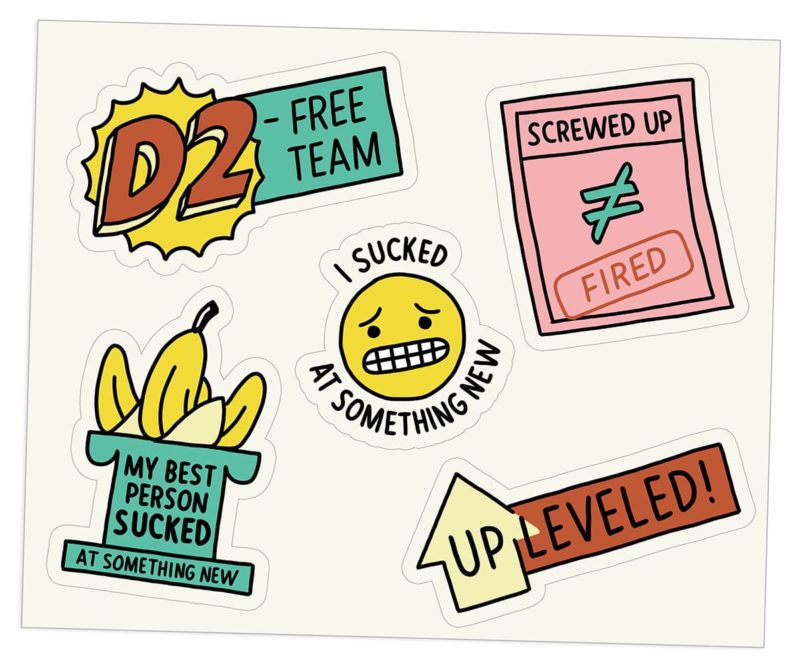Andy: Every person on my team is at a different level. And, they’re each at different levels depending on the task. Realizing that really changed how I manage.
Emma: We’re not all universally geniuses or universally duds! I remind myself that to help stave off the OH NO I’M DOOMED freak out when my go-to person messes something up. And to keep from writing off someone who’s messing up a lot as beyond help.
Andy: I mean, think about any new boss. We were probably phenomenal at our individual contributor work and suddenly pretty bad at managing.
Emma: You’re not doomed! We’re just new here!

Take Stock of Your Team
We like using Ken Blanchard’s situational leadership theory to figure out where our people are at on a skill or a task level. There are four development levels: D1 through D4.
D1: Low competence, high commitment
This is someone who’s just beginning and is excited to get better.
I’m so excited to try playing ukulele!
D2: Low to some competence, low commitment
They’re not great, but aren’t really into getting better. They may find it boring or dumb.
I can strum a few things, but I’m getting blisters. I’m not sure I want to do this.
D3: Medium to high competence, variable commitment
They’re getting there, and are sometimes excited, other times intimidated or frustrated.
I can play some songs, but am scared to play in front of other people. I’ll never be as good as my idols on YouTube.
D4: High competence, high commitment
They’re killing it and can do it on their own.
I’ve got a solid YouTube fan base and they love my ukulele originals.
Try This
In a spreadsheet, list everyone on your team down column A. Across row A, list all the skills they need to have to do their job. Then, go through the spreadsheet and rate each person in each area D1 to D4.
(Want to really blow your mind? Do this same exercise for yourself and your own job or hobby or goal.)
Then Do This
Use your list to decide where to put your energy. Here are two easy places to start:
D1s: These people are excited and eager to learn, so you’ll probably see huge advancements if you give them some attention and training.
D2s: These people aren’t doing well and aren’t committed to learning. Moving your D2s into any other level — or freeing them of this task by changing their role — will transform the energy of your entire team. We always start with some straight talk. Tell them what you’re seeing and ask what’s going on. “I’ve noticed you haven’t picked up your ukulele in two weeks. What’s going on?”

Andy: The goal isn’t to get my team to D4s down the line and then be done. I’m being a good boss if my best people are trying something new, something they’re not good at yet.
Emma: Yes! When I’m only doing D4 stuff, I’m probably about to hit a boredom wall.
But there’s no denying that an underperformer on my team feels like a personal failure and an embarrassment. They force me to face every management insecurity I have. What did I miss during their training? Were my expectations not clear, my feedback too slow? Am I savvy enough to get them to where they need to be? Should I have never hired them in the first place?
These questions aren’t bad. Analyzing the underperformers on my team is probably the most efficient way I’ve learned to be a better boss.
Andy: There is something so straightforward about: “We have some problems here and we will solve them.” It’s okay if you were part of the problem — as a manager, you probably are.
Emma: Oh, you for sure are. But that’s part of growing your people. Getting brave enough to diagnose the actual, real problem with a person’s performance is the first step to saying, “Cool! Let’s get to work.”
Good Boss Achievement Stickers: Underperformance Edition


